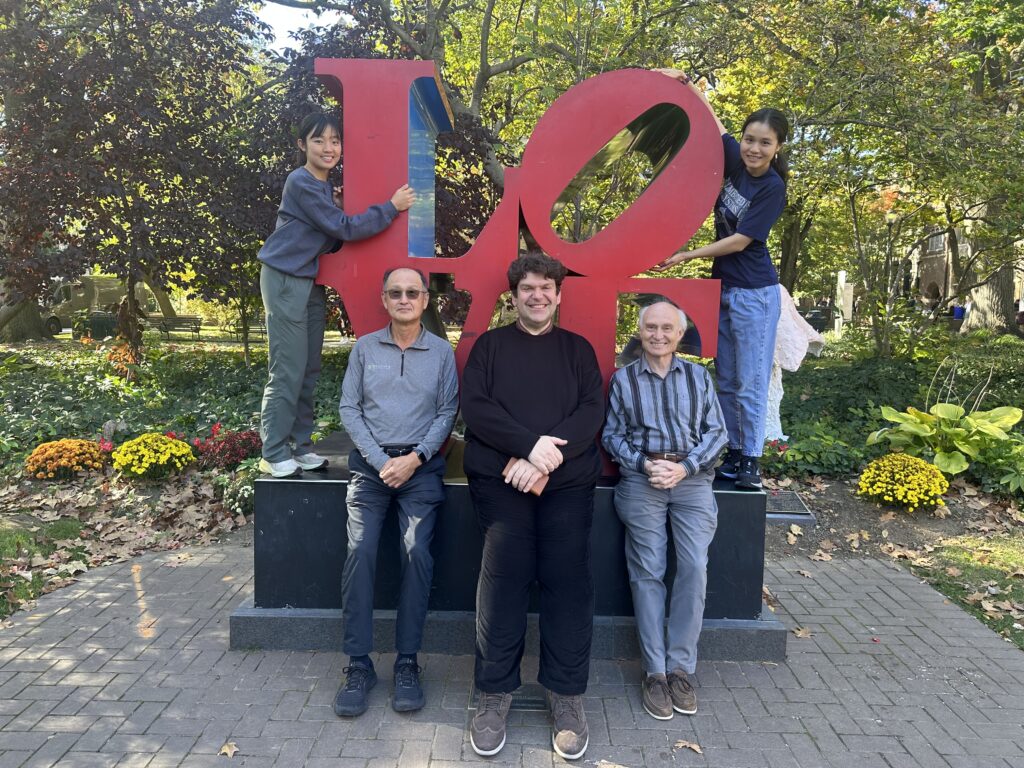
From left to right on the bottom: Insup Lee, George Demiris, Oleg Sokolsky
Combatting Loneliness and Isolation
Loneliness and isolation have become growing public health concerns in the United States, exacerbated by the COVID-19 pandemic. A new advisory from U.S. Surgeon General Dr. Vivek Murthy notes that about 50% of adults in the country reported being affected by loneliness in recent years, and this can impact not only mental health and the chances of developing depression or anxiety, but also increases the risk for heart disease, dementia and even premature death.
Older Americans are at higher risk for experiencing loneliness or a lack of connection, according to the Centers for Disease Control and Prevention, because they often live alone, may have lost close family and friends to old age, and may be dealing with conditions that can make it harder to go out and spend time with others, such as chronic illness, poor eyesight or hearing loss.
Given these circumstances, there is a pressing need for non-intrusive, reliable monitoring systems tailored to individual needs. A closed-loop system developed by doctoral students in the Penn Research in Embedded Computing and Integrated Systems Engineering, or PRECISE, Center aims to help address the problem by allowing caregivers to seamlessly monitor the physical and mental states of older adults and use the collected observations to decide on targeted interventions.
Xiayan Ji and Ahhyun Yuh are pursuing doctoral degrees in Computer and Information Science (CIS) and are advised by Insup Lee, Cecilia Fitler Moore Professor in CIS and Director of PRECISE, Oleg Sokolsky, Research Professor in CIS, and George Demiris, Mary Alice Bennett University Professor and Associate Dean for Research and Innovation in Penn Nursing.
“Through our iCareLoop home sensor setups, we’re getting a glimpse into an upcoming era where artificial intelligence, the Internet of Things, and both ambient and wearable sensing technologies are seamlessly integrated with human activities,” says Ji. “This fusion of tech opens up fresh avenues to support senior individuals who are experiencing social isolation and loneliness. We are piloting this platform across small and large communities in both the U.S. and Japan, exploring how cultural differences shape its impact.”
Key Takeaways
Ji and Yuh’s primary aim in the project is to identify which sensor technologies are most effective in predicting social isolation and loneliness among older people. Beyond that, they’re also committed to evaluating the impact of various personalized interventions via chatbot to alleviate these issues.
“We are in the data-collection phase of our research, focusing on senior communities in Philadelphia,” the researchers say. “Our efforts are currently aimed at gathering comprehensive data sets that will help us evaluate the most predictive variables from multiple sensor types.”
The researchers are also hoping to build an autonomous platform tailored to gather meaningful data and deliver services to older adults who are likely unfamiliar with computer technology. To achieve this, they have incorporated unobtrusive and energy-efficient sensors to ensure participants experience minimal disruptions in their daily routines. Further, they have developed a user-centric interface designed specifically for older adults, ensuring they can engage with the system effortlessly.
“One of the significant insights from our research thus far is recognizing the multitude of challenges associated with introducing technology to older individuals,” says Lee. “Specifically, addressing technical hitches like system disconnections and handling missing or inconsistent data has been crucial.”
From a scientific perspective, a surprising conclusion from the research was the varying degree to which different types of sensors effectively predict social isolation and loneliness. “Initially, we hypothesized that wearable sensors would be the most telling,” says Ji. “However, we have found that ambient sensors installed in living spaces can sometimes offer equally valuable, if not more nuanced, insights into an individual’s social and emotional well-being.”
Another unexpected finding is the complexity of the variables involved; the researchers note. It’s not just about whether someone is physically alone; factors like the time of day, the frequency of outings, or even the lighting conditions can all contribute to feelings of isolation or loneliness.
“The findings can help senior care facilities and health care providers fine-tune their services, and family members caring for older adults to make more educated decisions,” says Sokolsky. “For example, using a combination of wearable and ambient sensors could provide a more comprehensive understanding of a person’s emotional and social well-being.”
The U.S. and Japan
Ji and Yuh are collaborating with researchers at Osaka University in Japan in order to consider cultural factors that contribute to social isolation and loneliness.
“Our findings underscore the importance of personalized interventions in telehealth,” says Yuh. “For businesses, this means one-size-fits-all solutions might not be as effective across diverse populations. Companies aiming to deploy older-adult-centric systems globally must consider cultural nuances, preferences, individual habits and health conditions that can significantly impact the acceptance and effectiveness of their solutions.”
Loneliness vs. Social Isolation
The research also indicates that key to tackling the challenges of loneliness and isolation is untangling the differences between the two. Loneliness describes the subjective feeling of being emotionally disconnected, but it can occur even when someone is surrounded by people. By contrast, social isolation describes the objective lack of social interaction or relationships and can be quantifiably measured through variables including the frequency of social contacts or outings.
“One of the most striking findings from our study is that a substantial portion of our isolated elderly subjects did not report feeling lonely,” Ji notes. “This contradicts a commonly held belief that isolation invariably leads to feelings of loneliness.”
Understanding the difference between the two can lead to more effective interventions, more targeted social and health care policies and services better tailored to provide support to those who need it.
“Our research serves as an eye-opener, encouraging all stakeholders, whether they’re the public, media, businesses or policymakers, to reevaluate their perceptions and strategies for addressing the complex issues of loneliness and social isolation among older adults,” says Demiris.
This effort is funded by an NSF Smart and Connected Communities (SCC) grant.
